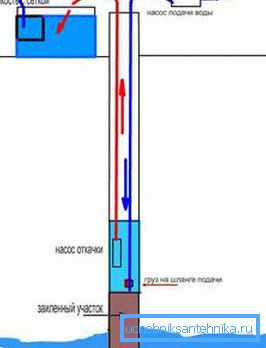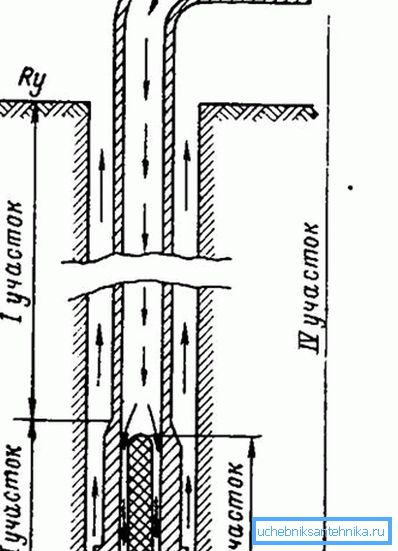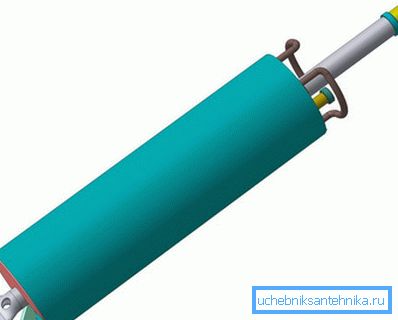How do we clean wells
If you notice that the pressure in the system has changed (dropped), then first of all you need to pay attention to the filters, and only after such a check is the well being cleaned for water. You also need to establish the source of pollution to eliminate the root cause, because otherwise the cleaning works will not make sense - in just a few days the same picture is waiting for you.
Below we will talk about this in more detail, and also see the thematic video in this article as additional material.

Clean well
Methods for cleaning

- The well is being cleaned from sand and silt in just four ways, but for each of them there are certain tools and devices. The choice of one method or another will depend on the degree of contamination of the production pipe, as well as on the material of the casing and production column, drilling clay and filter structure, as well as other parameters.
- Here are the ways to clean it:
- Flushing the production pipe with water from the surface;
- Using airlift to purge the wellbore;
- Pumping the contents of the two pumps, one of which will pump out, and the other - to supply water to the production pipe;
- Removal of silt or sand by a small scrape, manually.
Method one

This method is the most simple and accessible, and its essence is as follows: a hose is lowered into the well (preferably up to the filtration zone) and water is pumped under high pressure with a powerful pump.
At this time, the jet erodes the mud and sand formations at the bottom, squeezing them to the surface through the production pipe with a stream of water. But this method has significant drawbacks.
There is a danger of filter destruction by a powerful flow of water, although hydrogeologists are able to calculate its strength in order to determine the water head capacity in a hose. But here one inconvenience arises - because of prolonged use, the filter is weakened, and the jet power may not be enough to carry silt or sand formations to the surface.
The discharge of leachable sediments from the production pipe cannot be controlled, therefore the area of several tens of square meters is covered with mud (sand or silt). The only thing that can be done in such cases is to cover the estimated emission area with a cellophane film, and then collect it along with the dirt.
Note. To flush the well from the surface you will need a large amount of water that you need to have nearby. Therefore, the instruction here is as follows - when drilling, provide for access roads for a sewage truck. Otherwise, you will have to look for a large container to fill it with liquid and separately connect a powerful pump.
Second way

In general, the principle of purging is not much different from flushing, only here instead of water, air is supplied through a hose from a compressor at a pressure of 10-15 atmospheres (such a device is called an airlift).
Such a jet pushes water from the production pipe to the surface with sand and / or silt. As you can see, the problems arising from this cleaning can be identical, only liquids will be much less.
This method is applicable to wells with a depth of no more than 30-40m, which means that they can be drilled only on sand. In addition, the air pressure in this case will be much greater than the water pressure, so the danger of damage to the filter increases.
Note. If you have a sand hole, and you want to apply one of the above two methods, first of all, think about the possibility of damage to the filter, which is not recoverable. So it may be that the price of cleaning will require drilling a new well.
Third way

This method is quite easy, but very long, which is completely offset by its safety.. Here, besides the submersible one, a pump is used to clean the well, which, under pressure, pumps water inside and loosens the sandy-silt formation, lifting it from the bottom. (See also the article Which Pump is Better for a Well: Selection Criteria.)
To implement such a project, you will need a tank with a minimum capacity of 200 liters (filled with water) and on top of the inlet, fix the bucket with a filter in the form of a bottom made of metal (plastic) mesh or nylon stocking.
Pumped liquid will be fed here, and dirt will be collected at the bottom (filter) of the bucket. The other hose will be feeding - it is connected to a motor-pump and lowered from it to the bottom of the well until it stops, and then lifted by 10 cm.
Start this cycle and make sure that the water from the submersible pump is not too heavy, that is, that there is not too much dirt, otherwise you will have to clean the filters too often. In this case, you can raise the supply hose by a few centimeters.
At the end of the process, the pumped-out water can be directed not into the tank, but into the gutter, but do this only when you see that the column of water has begun to recover successfully. (See also the article Replacing the pump in the well with your own hands.)
Fourth way

The most time-consuming, but at the same time, the most reliable method of cleaning, which allows a non-working well to be restored to its original state, removing not only silt with sand, but also small pebbles. In addition, the shell can be made by hand, in accordance with the internal diameter of the production pipe (2 cm already).
Sink on the steel cable is lowered to the bottom of the well, then raised by half a meter and dramatically lowered down. With the help of potential energy, the ball opens a hole from the bottom, where the agitated water flows, and then under its own weight it drops, plugging the hole.
In three or four cycles, the shell gets to the top and is gently lifted to the surface, cleaned and repeated all over again, until the well is completely cleaned.
Conclusion
If you are interested in how much it costs to clean a well, then contact those who do this in your area and most often these are the same drillers. There are no fixed tariffs for such works.